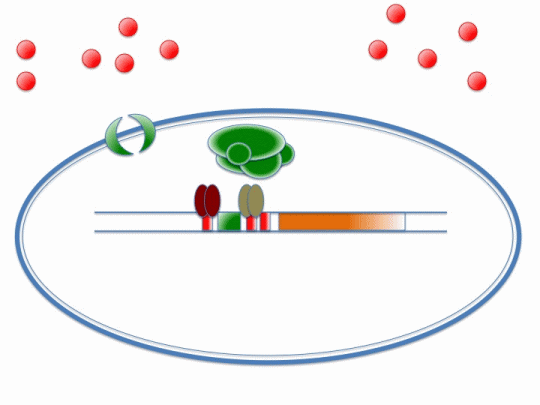Team:Newcastle/Metalsensing
From 2009.igem.org
(Difference between revisions)
(→Other Presentations and Diagrams) |
(→Lab Work done) |
||
| Line 35: | Line 35: | ||
| <center>'''Description'''</center> | | <center>'''Description'''</center> | ||
|- | |- | ||
| - | | '''[https://2009.igem.org/Team:Newcastle/Labwork/ | + | | '''[https://2009.igem.org/Team:Newcastle/Labwork/18_August_2009#Metal_Sensor_Team 18th August 2009]''' |
| - | | | + | | Transformed ''DH5-alpha E. coli'' cells with ''BBa_J33206'' from the Spring Distribution |
|- | |- | ||
|} | |} | ||
Revision as of 20:42, 21 October 2009
Metal Sensing
Introduction
If our project is to process cadmium and not other metals, we need to genetically engineer Bacillus subtilis to carry out a set of cellular processes based on the action of metal sensors. These metal sensors will detect cadmium through a system known as AND Gating.
There are two metal sensing repressors, which are known to respond to cadmium: arsR and czrA. By placing binding sites to these two metal sensing repressors next to each other in a promoter region, the gene regulated by that promoter will be synthesized only when a combination of metals that bind to both sensors are present; this is a combinatorial approach for gene expression regulation.
Modelling
BioBrick constructs
Lab Work Strategies
Other Presentations and Diagrams
Lab Work done
| Summary of Lab Sessions for Cadmium Sensing | |
|---|---|
| | |
| 18th August 2009 | Transformed DH5-alpha E. coli cells with BBa_J33206 from the Spring Distribution |
News
Events
- 20 – 21 June 2009 - Europe workshop (London)
- 23 – 24 June 2009 - UK iGEM meetup (Edinburgh)
- 23 October Practice Presentation (Newcastle)
- 23 October T-shirts are ready
- 27 October Practice Presentation (Sunderland)
- 27 October Poster is ready
- 30 October – 2 November 2009 - Jamboree (Boston)
Social Net
- Newcastle iGEM Twitter
- [http://www.facebook.com/home.php#/group.php?gid=131709337641 Newcastle on Facebook]
- [http://www.youtube.com/user/newcastle2009igem Newcastle Youtube Channel]
 "
"

